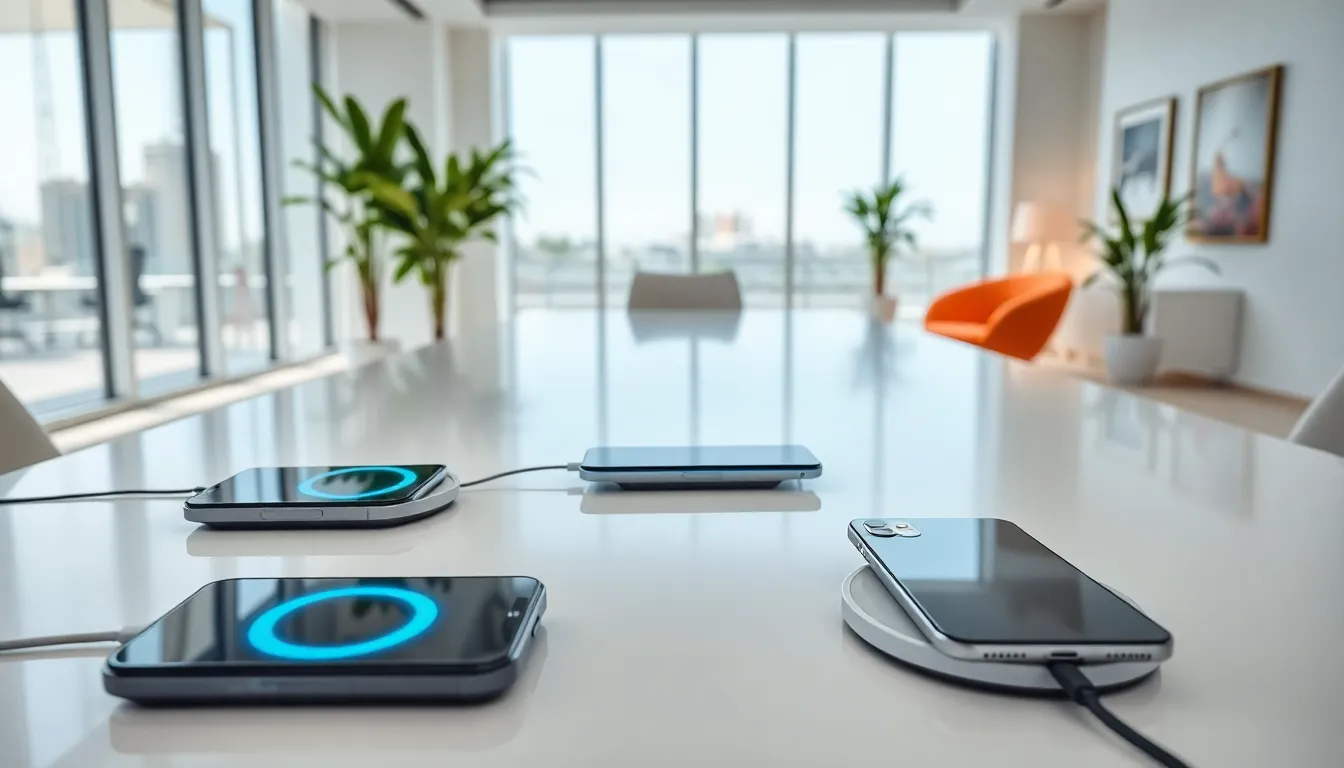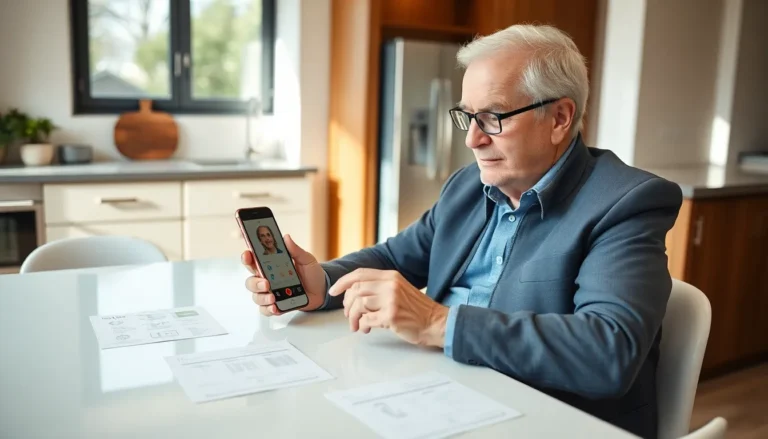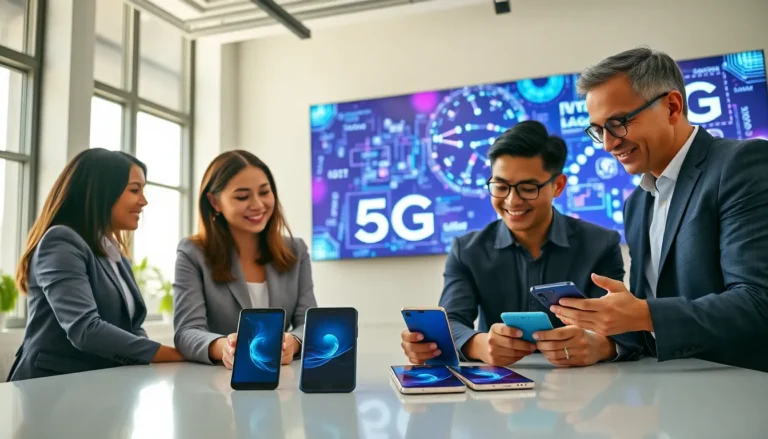Table of Contents
ToggleImagine a world where your phone charges just by resting on a surface. Sounds like something from a sci-fi movie, right? Well, it’s not. With the advent of wireless charging technology, that dream’s already a reality today. No more fumbling with cords or searching for the nearest outlet while mouse-holing down webs of cables. This article will explore everything you need to know about phones with wireless charging, from how it works to the best devices available. So, grab your coffee and let’s immerse.
Understanding Wireless Charging Technology

Wireless charging relies on electromagnetic fields to transfer energy between two objects. At its core, this technology comes down to something called inductive charging. Here’s how it works: a charging pad includes a transmitter coil that generates an electromagnetic field. When a compatible phone, equipped with a receiver coil, is placed on this pad, the energy is transferred wirelessly.
There are different wireless charging standards, primarily Qi, PMA, and A4WP. Qi is the most widely accepted, often found in smartphones. PMA and A4WP have their advantages, but they’re not as prevalent. If you’re looking to invest in wireless charging, Qi-compatible devices are your best bet.
Benefits of Wireless Charging
So, why should you jump on the wireless charging bandwagon? For starters, it offers unparalleled convenience. Just plop your phone down on a charging pad, and voilà, no cords required. Imagine the ease of using your phone while it charges, without being tethered to a wall socket.
Also, wireless charging minimizes wear and tear on charging ports. Traditional charging can create frayed cables and damaged connectors, leading many users on a quest for replacements. Wireless charging alleviates this problem since your phone maintains a clean, port-free life.
Not to forget, it’s aesthetically pleasing. A clutter-free surface without cords looping around makes any space feel more organized and modern. And let’s be honest, who doesn’t like shiny gadgets?
Top Phones That Support Wireless Charging
If you’re ready to buy a phone with wireless charging, here are some top contenders:
- Apple iPhone 14: The latest offering from Apple supports Qi charging, ensuring quick and efficient power-ups.
- Samsung Galaxy S21: With its sleek design and reliability, the Galaxy S21 is a fantastic choice for Android users.
- Google Pixel 6: Aiming for a pure Android experience? The Pixel 6 also comes equipped with wireless charging capabilities.
Comparison of Wireless Charging Standards
When considering which phone to buy, it’s wise to pay attention to the charging standards.
- Qi: The industry leader, used widely across various brands, ensuring compatibility and efficiency.
- PMA: While less common, this standard is often found in commercial spaces such as coffee shops.
- A4WP: Known for its resonant inductive coupling, it offers the potential for charging multiple devices at once but isn’t as popular in consumer phones yet.
Best Practices for Wireless Charging
To maximize your wireless charging experience, try these best practices:
- Choose the Right Charger: Not all chargers are created equal. Opt for reputable brands that support your phone’s charging speed.
- Remove Cases: Some phone cases can interfere with the charging process. If you notice slow charging, consider removing extra-thick or metallic cases.
- Positioning Matters: Place your device centrally on the pad for efficient energy transfer. Misplacing your phone can lead to interrupted charging, nobody wants that.
- Keep it Cool: Wireless charging can generate heat. Ensure that the charger has good ventilation to prevent overheating, which can affect battery health.
Addressing Common Misconceptions About Wireless Charging
Many myths surround wireless charging, leading to confusion. Here are some clarifications to set the record straight:
- It’s Not Slow: While it can be slower than wired charging, advancements in technology have improved speeds significantly. Many users find it fast enough for daily use.
- It’s Safe: Concerns about battery health and electromagnetic fields abound. Rest assured, reputable chargers are designed with safety features to protect your device.
- No Special Cables Needed: Some believe special cables are required for wireless charging: in reality, all you need is a compatible charging pad.
Future Trends in Wireless Charging Technology
Looking ahead, the potential for wireless charging is immense. Companies are exploring several avenues to improve the technology.
- Extended Range Charging: Imagine charging your phone from across the room. New prototypes aim to deliver power over greater distances, breaking the traditional barriers of close proximity.
- Integration with Everyday Objects: Can you envision a future where your coffee table charges your phone? Some developments are exploring charging surfaces that can wirelessly power devices while you use them.






